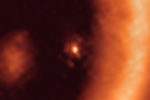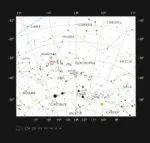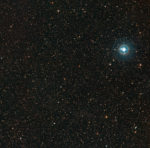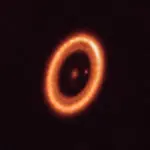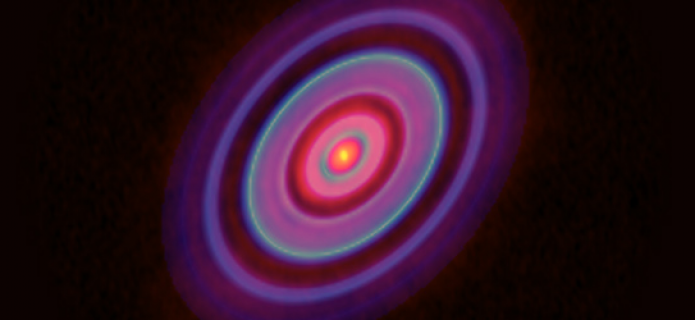Astronomers make first clear detection of a moon-forming disc around an exoplanet
22 July, 2021 / Read time: 9 minutes
Scientific PaperUsing the Atacama Large Millimeter /submillimeter Array (ALMA), astronomers have unambiguously detected the presence of a disc around a planet outside our Solar System for the first time. The observations will shed new light on how moons and planets form in young stellar systems.
“Our work presents a clear detection of a disc in which satellites could be forming,” says Myriam Benisty, a researcher at the University of Grenoble, France, and at the University of Chile, who led the new research published today in The Astrophysical Journal Letters. “Our ALMA observations were obtained at such exquisite resolution that we could clearly identify that the disc is associated with the planet and we are able to constrain its size for the first time,” she adds.
The disc in question, called a circumplanetary disc, surrounds the exoplanet PDS 70c, one of two giant, Jupiter-like planets orbiting a star nearly 400 light-years away. Astronomers had found hints of a “moon-forming” disc around this exoplanet before but, since they could not clearly tell the disc apart from its surrounding environment, they could not confirm its detection — until now.
In addition, with the help of ALMA, Benisty and her team found that the disc has about the same diameter as the distance from our Sun to the Earth and enough mass to form up to three satellites the size of the Moon.
But the results are not only key to finding out how moons arise. “These new observations are also extremely important to prove theories of planet formation that could not be tested until now,” says Jaehan Bae, a researcher from the Earth and Planets Laboratory of the Carnegie Institution for Science, USA, and author on the study.
Planets form in dusty discs around young stars, carving out cavities as they gobble up material from this circumstellar disc to grow. In this process, a planet can acquire its own circumplanetary disc, which contributes to the growth of the planet by regulating the amount of material falling onto it. At the same time, the gas and dust in the circumplanetary disc can come together into progressively larger bodies through multiple collisions, ultimately leading to the birth of moons.
But astronomers do not yet fully understand the details of these processes. “In short, it is still unclear when, where, and how planets and moons form,” explains ESO Research Fellow Stefano Facchini, also involved in the research.
“More than 4000 exoplanets have been found until now, but all of them were detected in mature systems. PDS 70b and PDS 70c, which form a system reminiscent of the Jupiter-Saturn pair, are the only two exoplanets detected so far that are still in the process of being formed,” explains Miriam Keppler, researcher at the Max Planck Institute for Astronomy in Germany and one of the co-authors of the study [1].
“This system therefore offers us a unique opportunity to observe and study the processes of planet and satellite formation,” Facchini adds.
PDS 70b and PDS 70c, the two planets making up the system, were first discovered using ESO’s Very Large Telescope (VLT) in 2018 and 2019 respectively, and their unique nature means they have been observed with other telescopes and instruments many times since [2].
The latest high resolution ALMA observations have now allowed astronomers to gain further insights into the system. In addition to confirming the detection of the circumplanetary disc around PDS 70c and studying its size and mass, they found that PDS 70b does not show clear evidence of such a disc, indicating that it was starved of dust material from its birth environment by PDS 70c.
An even deeper understanding of the planetary system will be achieved with ESO’s Extremely Large Telescope (ELT), currently under construction on Cerro Armazones in the Chilean Atacama desert. “The ELT will be key for this research since, with its much higher resolution, we will be able to map the system in great detail,” says co-author Richard Teague, a researcher at the Center for Astrophysics | Harvard & Smithsonian, USA. In particular, by using the ELT’s Mid-infrared ELT Imager and Spectrograph (METIS), the team will be able to look at the gas motions surrounding PDS 70c to get a full 3D picture of the system.
Notes
[1] Despite the similarity with the Jupiter-Saturn pair, note that the disc around PDS 70c is about 500 times larger than Saturn's rings.
[2] PDS 70b was discovered using the Spectro-Polarimetric High-contrast Exoplanet REsearch (SPHERE) instrument, while PDS 70c was found using the VLT’s Multi Unit Spectroscopic Explorer (MUSE). The two-planet system has been investigated using the X-shooter instrument too, also installed on ESO’s VLT.
Additional Information
This research was presented in the paper “A Circumplanetary Disk Around PDS 70c” to appear in The Astrophysical Journal Letters.
The team is composed of Myriam Benisty (Unidad Mixta Internacional Franco-Chilena de Astronomía, CNRS, Departamento de Astronomía, Universidad de Chile, Santiago de Chile, Chile and Université Grenoble Alpes, CNRS, Grenoble, France [UGA]), Jaehan Bae (Earth and Planets Laboratory, Carnegie Institution for Science, Washington DC, USA), Stefano Facchini (European Southern Observatory, Garching bei München, Germany), Miriam Keppler (Max Planck Institute for Astronomy, Heidelberg, Germany [MPIA]), Richard Teague (Center for Astrophysics | Harvard & Smithsonian, Cambridge, MA, USA [CfA]), Andrea Isella (Department of Physics and Astronomy, Rice University, Houston, TX, USA), Nicolas T. Kurtovic (MPIA), Laura M. Perez (Departamento de Astronomía, Universidad de Chile, Santiago de Chile, Chile [UCHILE]), Anibal Sierra (UCHILE), Sean M. Andrews (CfA), John Carpenter (Joint ALMA Observatory, Santiago de Chile, Chile), Ian Czekala (Department of Astronomy and Astrophysics, Pennsylvania State University, PA, USA, Center for Exoplanets and Habitable Worlds, Davey Laboratory, Pennsylvania State University, PA, USA, Center for Astrostatistics, Davey Laboratory, Pennsylvania State University, PA, USA and Institute for Computational & Data Sciences, Pennsylvania State University, PA, USA), Carsten Dominik (Anton Pannekoek Institute for Astronomy, University of Amsterdam, The Netherlands), Thomas Henning (MPIA), Francois Menard (UGA), Paola Pinilla (MPIA and Mullard Space Science Laboratory, University College London, Holmbury St Mary, Dorking, UK) and Alice Zurlo (Núcleo de Astronomía, Facultad de Ingeniería y Ciencias, Universidad Diego Portales, Santiago de Chile, Chile and Escuela de Ingeniería Industrial, Facultad de Ingeniería y Ciencias, Universidad Diego Portales, Santiago de Chile, Chile).
The original press release was published by the European Southern Observatory, an ALMA partner on behalf of Europe.
The Atacama Large Millimeter/submillimeter Array (ALMA), an international astronomy facility, is a partnership of the European Organisation for Astronomical Research in the Southern Hemisphere (ESO), the U.S. National Science Foundation (NSF) and the National Institutes of Natural Sciences (NINS) of Japan in cooperation with the Republic of Chile. ALMA is funded by ESO on behalf of its Member States, by NSF in cooperation with the National Research Council of Canada (NRC) and the Ministry of Science and Technology (MOST) and by NINS in cooperation with the Academia Sinica (AS) in Taiwan and the Korea Astronomy and Space Science Institute (KASI).
ALMA construction and operations are led by ESO on behalf of its Member States; by the National Radio Astronomy Observatory (NRAO), managed by Associated Universities, Inc. (AUI), on behalf of North America; and by the National Astronomical Observatory of Japan (NAOJ) on behalf of East Asia. The Joint ALMA Observatory (JAO) provides the unified leadership and management of the construction, commissioning and operation of ALMA.
Images
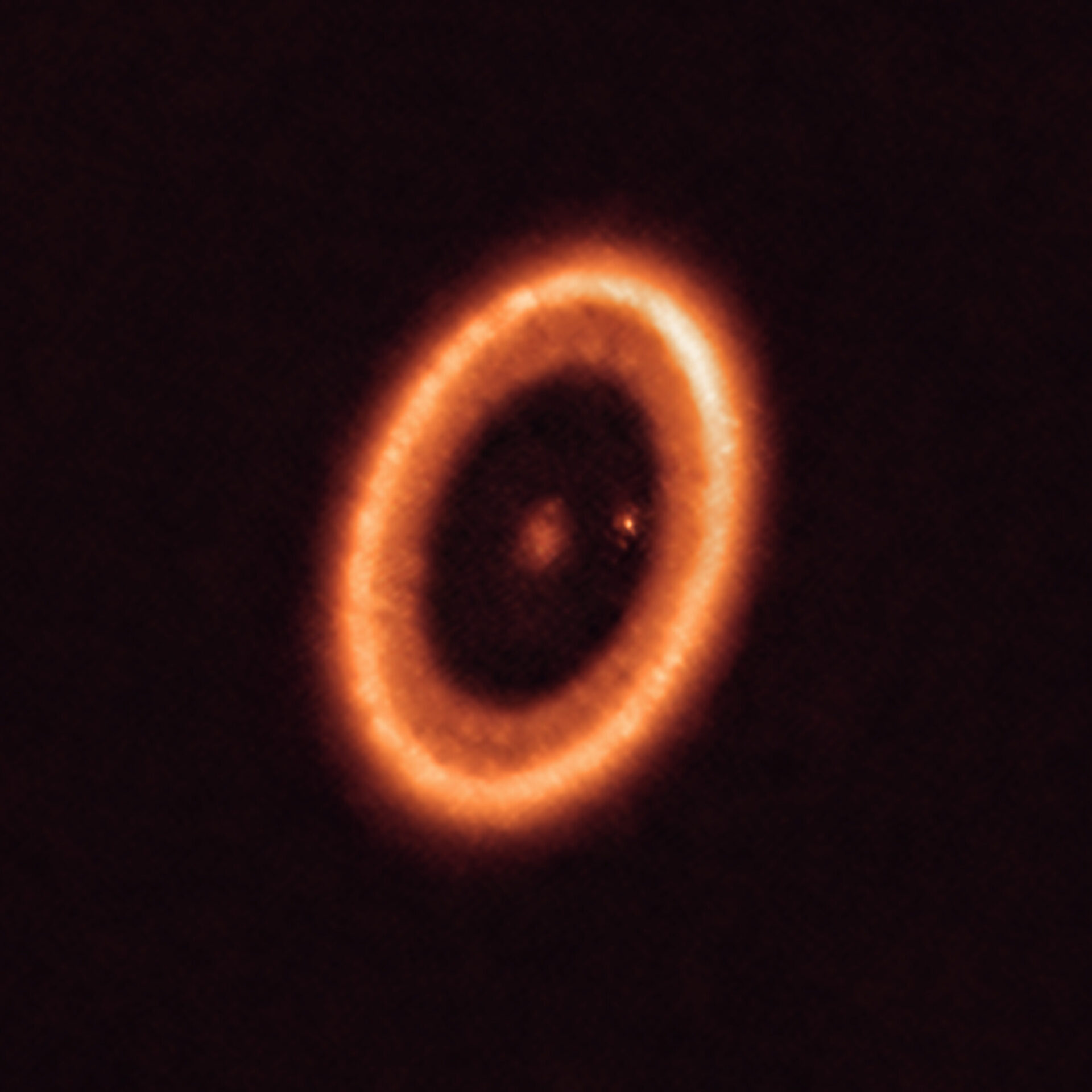
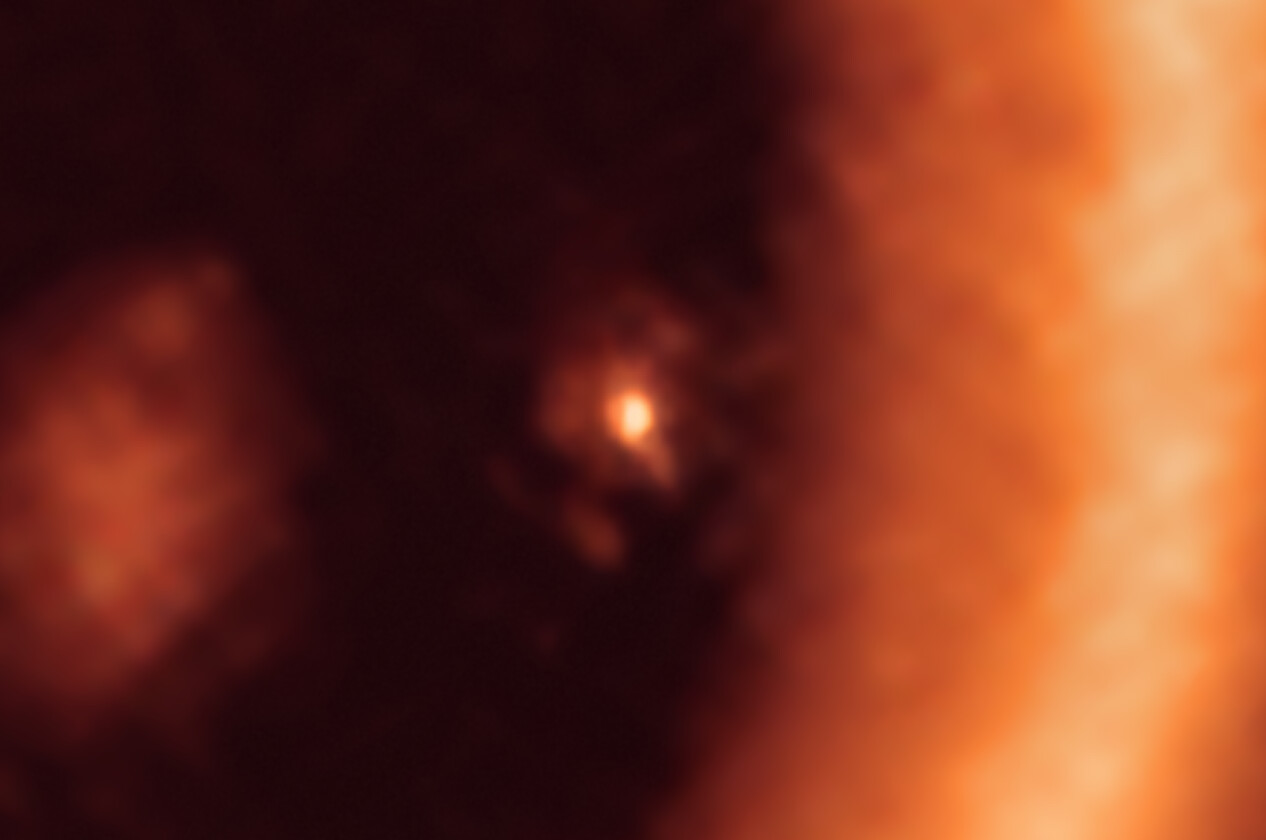
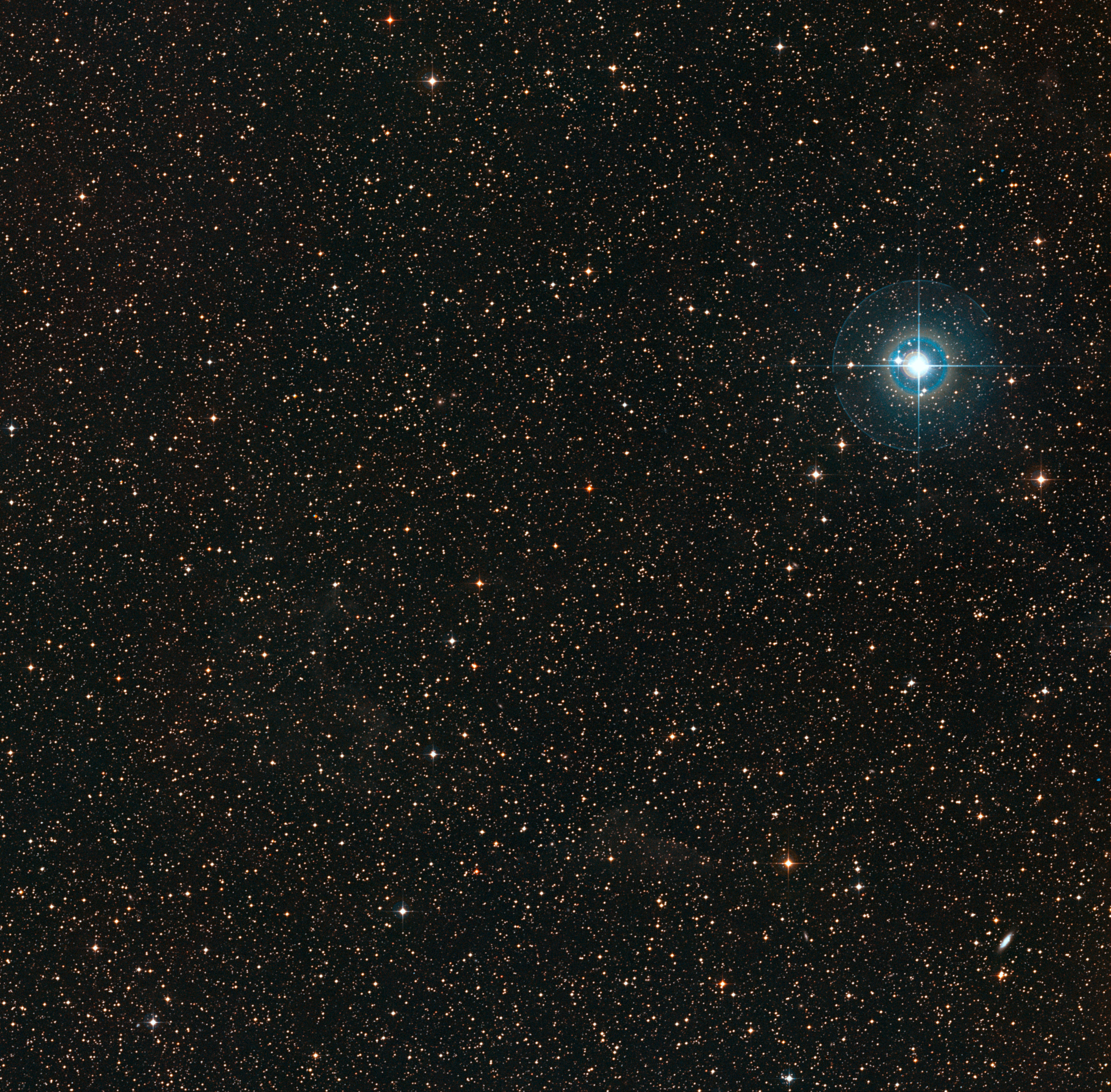
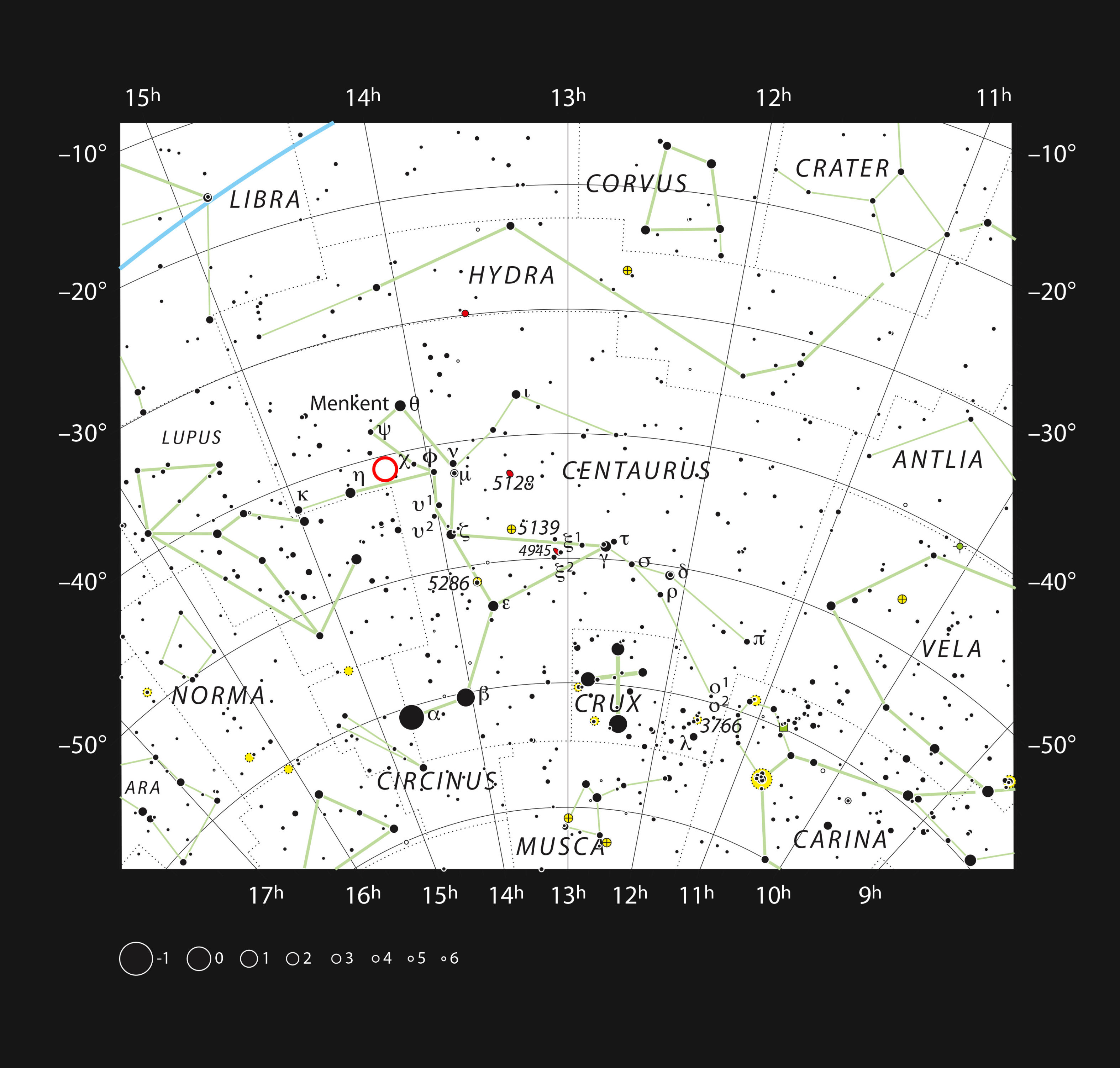
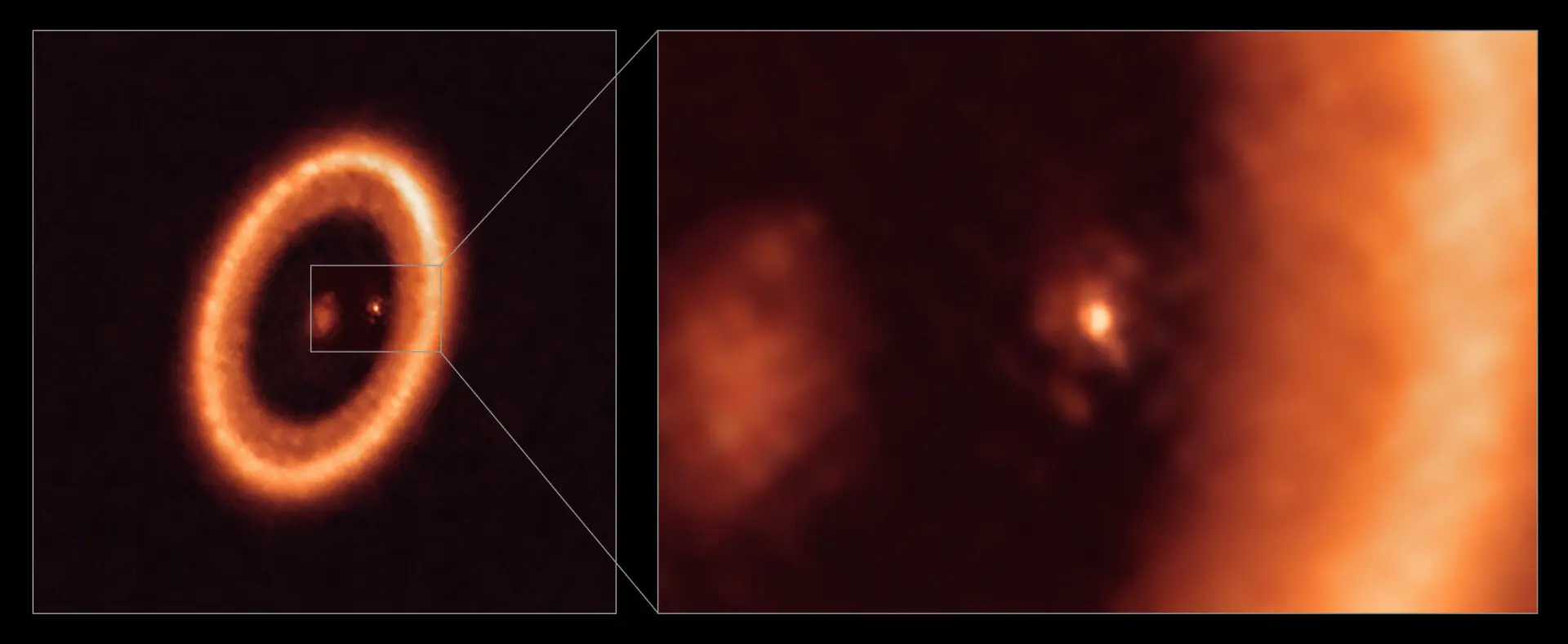
Videos
Contacts
-
Valeria Foncea
Education and Public Outreach Manager
Joint ALMA Observatory Santiago - Chile
Phone: +56 2 2467 6258
Cel: +56 9 7587 1963
Email: [email protected]
-
Bárbara Ferreira
-
Masaaki Hiramatsu
Education and Public Outreach Officer, NAOJ Chile
Observatory, Tokyo - Japan
Phone: +81 422 34 3630
Email: [email protected]
-
Amy C. Oliver
Public Information & News Manager
National Radio Astronomical Observatory (NRAO), USA
Phone: +1 434 242 9584
Email: [email protected]

